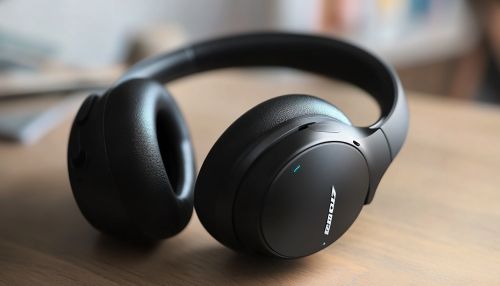Noise Reduction
Introduction
Noise reduction refers to the process of minimizing unwanted sound or noise in various environments, including industrial settings, urban areas, and electronic systems. This article delves into the technical and scientific aspects of noise reduction, exploring various methods, technologies, and applications.
Types of Noise
Noise can be broadly categorized into several types, each requiring different noise reduction strategies:
Acoustic Noise
Acoustic noise is unwanted sound that can be heard by the human ear. It includes environmental noise such as traffic, industrial noise, and noise from household appliances.
Electrical Noise
Electrical noise refers to unwanted disturbances in electrical signals, which can affect the performance of electronic devices. This type of noise includes thermal noise, shot noise, and flicker noise.
Mechanical Noise
Mechanical noise is generated by the physical movement of mechanical components. This type of noise is common in machinery, vehicles, and HVAC systems.
Methods of Noise Reduction
Noise reduction techniques can be classified into passive and active methods, each with its own set of applications and limitations.
Passive Noise Reduction
Passive noise reduction involves the use of materials and structures to block or absorb noise. Common methods include:
Sound Insulation
Sound insulation involves creating barriers to prevent noise from entering or leaving a space. Materials such as fiberglass, foam, and mass-loaded vinyl are commonly used for sound insulation.
Sound Absorption
Sound absorption techniques aim to reduce the reflection of sound waves within a space. Acoustic panels, carpets, and curtains are examples of sound-absorbing materials.
Vibration Damping
Vibration damping involves reducing the transmission of vibrational energy through materials. This can be achieved using damping compounds, isolation mounts, and viscoelastic materials.
Active Noise Reduction
Active noise reduction (ANR) uses electronic systems to cancel out unwanted noise. This method is commonly used in headphones and industrial applications.
Noise-Canceling Headphones
Noise-canceling headphones use microphones to pick up ambient noise and generate an anti-noise signal to cancel it out. This technology is effective for reducing low-frequency noise.
Active Noise Control in HVAC Systems
Active noise control (ANC) can be applied to HVAC systems to reduce noise generated by fans and ducts. This involves installing speakers and microphones within the system to create anti-noise signals.


Applications of Noise Reduction
Noise reduction technologies are applied in various fields to improve comfort, safety, and performance.
Industrial Applications
In industrial settings, noise reduction is crucial for protecting workers' hearing and improving communication. Techniques such as soundproof enclosures, mufflers, and vibration isolators are commonly used.
Urban Planning
Urban planners use noise reduction strategies to create quieter and more livable cities. This includes the use of noise barriers along highways, zoning regulations, and green spaces to absorb sound.
Consumer Electronics
Noise reduction is essential in consumer electronics to enhance user experience. Smartphones, laptops, and home entertainment systems often incorporate noise-canceling microphones and speakers.
Medical Applications
In medical settings, noise reduction is important for patient comfort and the accuracy of diagnostic equipment. Soundproofing materials and quiet HVAC systems are commonly used in hospitals and clinics.
Challenges in Noise Reduction
Despite advances in noise reduction technologies, several challenges remain:
Complexity of Noise Sources
Noise sources are often complex and multifaceted, making it difficult to apply a one-size-fits-all solution. Different environments and applications require tailored noise reduction strategies.
Cost and Feasibility
Implementing noise reduction measures can be costly and may not always be feasible. For example, retrofitting an existing building with soundproofing materials can be expensive and disruptive.
Technological Limitations
While active noise reduction technologies have advanced, they are still limited by factors such as battery life, processing power, and the ability to cancel high-frequency noise.
Future Trends in Noise Reduction
The field of noise reduction is continually evolving, with new technologies and methods being developed to address emerging challenges.
Smart Noise Reduction Systems
Smart noise reduction systems use artificial intelligence (AI) and machine learning to adapt to changing noise environments. These systems can dynamically adjust noise-canceling parameters for optimal performance.
Advanced Materials
Research is ongoing into advanced materials with superior noise reduction properties. These materials include meta-materials, which can manipulate sound waves in novel ways.
Integration with IoT
The integration of noise reduction technologies with the Internet of Things (IoT) allows for more efficient and automated noise management. For example, smart home systems can adjust noise-canceling settings based on user preferences and environmental conditions.
